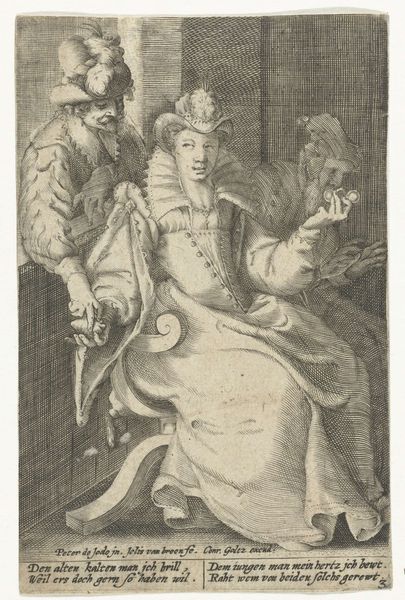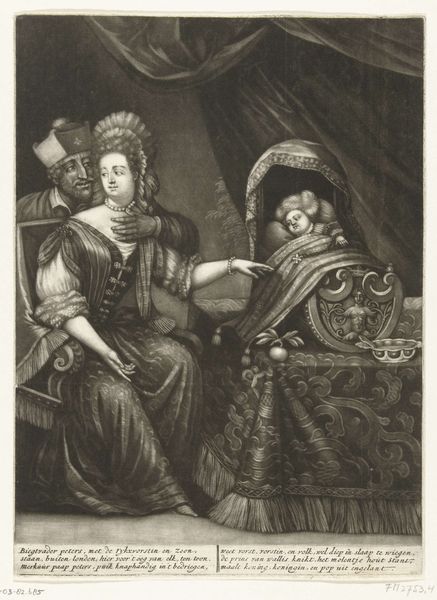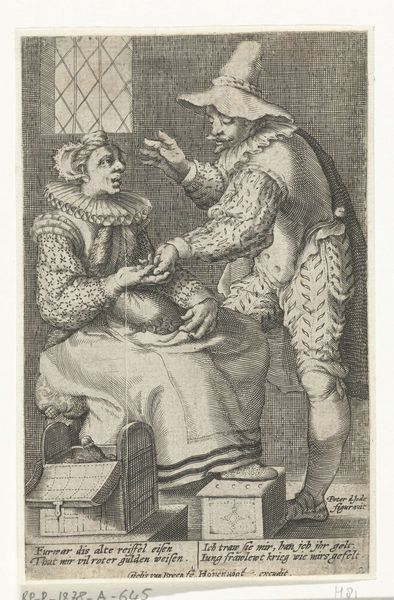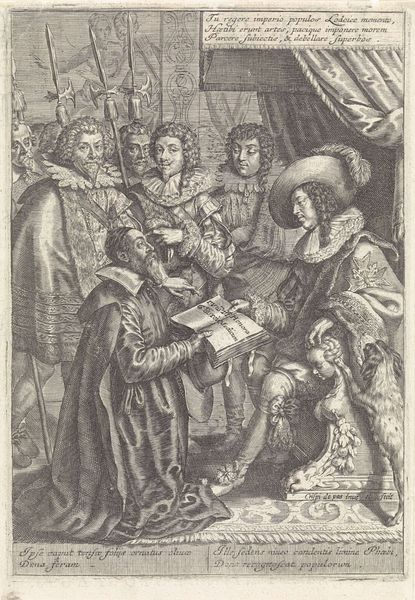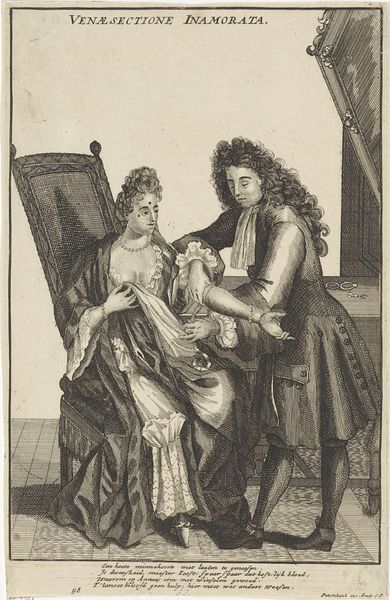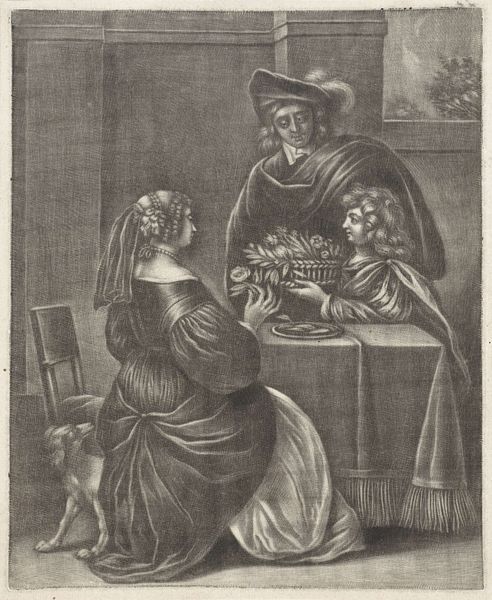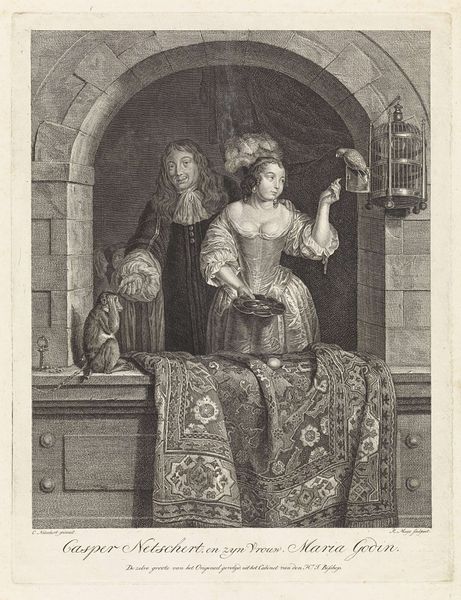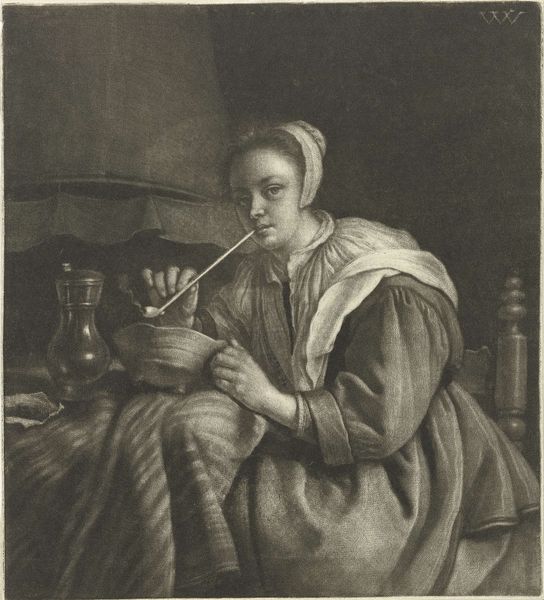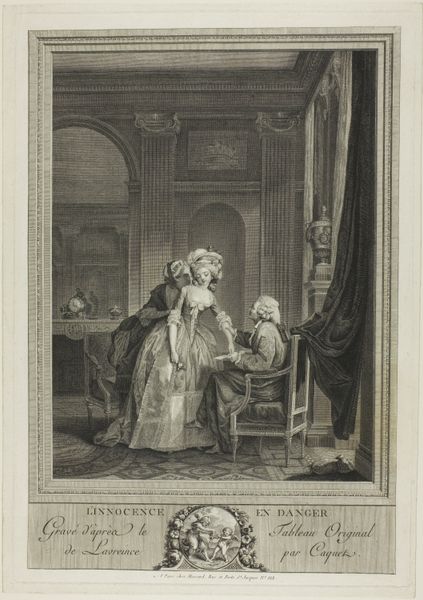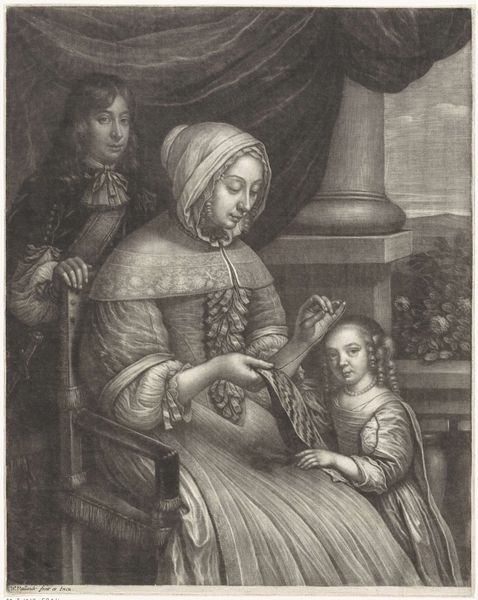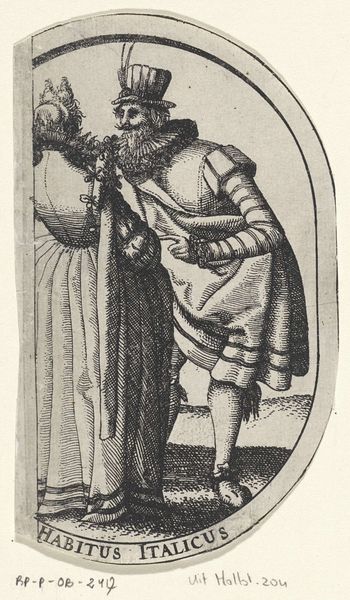
print, engraving
#
portrait
#
baroque
# print
#
old engraving style
#
line
#
portrait drawing
#
history-painting
#
engraving
Dimensions: height 522 mm, width 192 mm
Copyright: Rijks Museum: Open Domain
Curator: Here we have François Harrewijn's engraving, "Portret van Isabella Clara Eugenia, infante van Spanje," dating roughly from 1710 to 1764. The style certainly aligns with the Baroque sensibilities of that era. What are your first thoughts on it? Editor: I'm immediately drawn to the sheer texture created by the engraving technique, all those precise lines building form and depth. And yet, there's a coldness, a formality that seems inherent to the medium itself. Curator: Precisely. The formality echoes the subject, Isabella Clara Eugenia, a significant figure in her time. Her representation is inextricably linked to her role as a sovereign and a woman of power, which should also address the dynamics between feminine identity, representation, and power within early modern European society. How does this influence our interpretation? Editor: I wonder about the physical labor involved in creating such an intricate print. It's not just the artist's skill, but also the workshop setting, the division of labor involved in reproducing and distributing these images. That system reinforces power, doesn't it? It literally materializes and disseminates her image across a broader social context. Curator: Absolutely. Consider the clothing, the materials – the lace, the velvet, even the pearl rosary she holds – they are not merely aesthetic elements. Each of these signifies status, trade, and colonial power structures that directly affected people and other societies. Editor: The drape in the background is rendered incredibly effectively. Also notice that another woman assists her and her status is clearly different. What were the differences in their social power? I am captivated by that interplay of materials—the physical textures translated so meticulously by the engraver’s burin. Curator: Indeed. This allows us to think critically about art production as both a material practice and a socio-political enterprise. Harrewijn's engraving serves as a reminder that art never exists in a vacuum; it’s born from, and perpetuates, a specific arrangement of social relations. Editor: I see how the material of the print – its accessibility and reproducibility – serves to amplify that social reach. A painting remains in the realm of the elite, but an engraving finds its way into a different sort of consumption pattern, one connected to broader trade networks. It is fascinating. Curator: Agreed. We have unveiled the layered interplay of history, identity, and materiality. The engraving encourages us to examine the production and circulation of images as acts deeply embedded within, and constitutive of, socio-political realities.
Comments
No comments
Be the first to comment and join the conversation on the ultimate creative platform.
